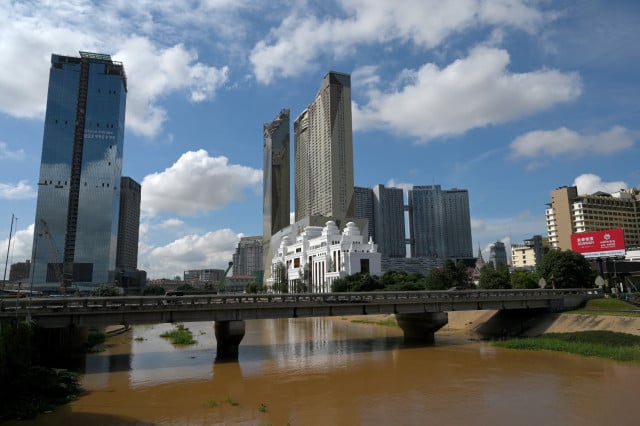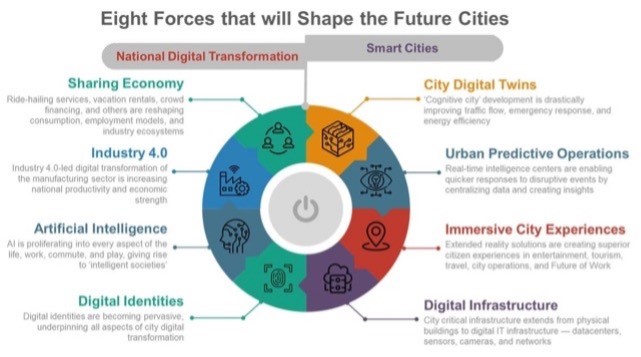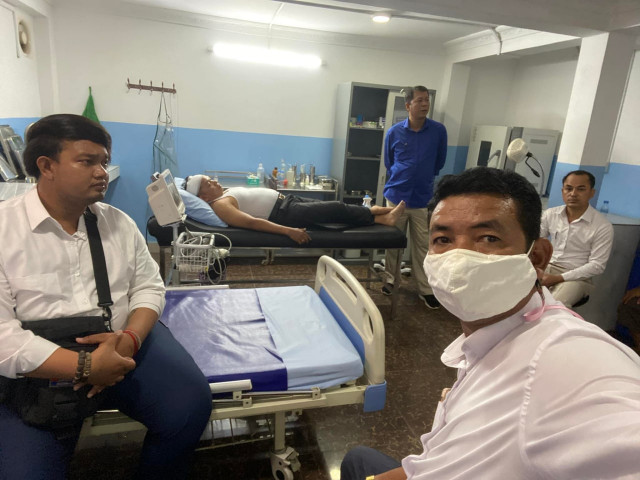Digitalisation: A Case of Phnom Penh

In this 21st century, we have witnessed massive urban and city enlargement in all parts of the world. The reason is that the world's population is constantly increasing, with more and more people coming to the cities for various purposes, including but not limited to seeking higher education, employment, and better living standards.
According to World Bank, there are approximately 4.4 billion people, which accounts for almost 60 percent of the global population, who live in cities to date, and it is projected that 70 percent of the world population will be considered city-dwellers by 2050.
Regionally, about half of the Southeast Asian population is urban. Approximately 250 million people in this region will live in urban areas by 2030. Opportunities and prosperous economic growth in the region are driven by rapid urbanisation. Similarly, Cambodia has seen rapid urbanisation growth over the past ten years.
The population residing in Phnom Penh alone has reached more than 3 million, growing by around three percent annually, stimulated by the Royal Government of Cambodia's ambition to pursue graduation as an upper-middle-income country by 2030 and a high-income country by 2050. This rapid development has fostered the issues to be solved, which requires the alignment between the city's capability and the development levels.
The question is, where are we now? Are we ready to step up to a smart city?
Considering the definition, we can differentiate digital transformation and actual smart cities based on Huawei's "Eight Indicators". Furthermore, the illustration explains the inductors of smart cities beyond national digital transformation or digital cities as smarter cities provide more autonomous operative systems (See Figure 1).

Figure 1: Eight forces shaping future cities (Huawei).
Phnom Penh City as a Smart City: Where are we?
Despite the country's infrastructure and economic development limitations, Cambodia has shown its efforts to transform its cities into innovative and sustainable ones. In 2019, Phnom Penh was among two other cities, Siem Reap and Battambang, that the government nominated to participate in the ASEAN Smart Cities Networks. For Phnom Penh, as outlined in the Phnom Penh Master Plan 2035 released in 2020, the city will be developed based on the smart city concept to ensure sustainable and economic development to accommodate the anticipated 8 million people living in the cities by 2030.
The Phnom Penh Capital Hall has actively worked on upgrading the city into a smart city. According to Phnom Penh's Smart and Sustainable strategic roadmap, jointly developed by the Phnom Penh municipal and the Association Internationale des Maires Francophones (AIMF) with the financial contribution of the European Union, there are five prioritised areas for Phnom Penh's Smart City development: land use, urban mobility, security and safety, environment, and digital management.
Land usage in the city requires a digital map that could visualise the city's layout and physical infrastructure. However, the City Hall has set targets of developing the "Digital One Map" by 2035, a 3D Integrated Map by 2030, and a more advanced one, Digital Twin, by 2035. This will benefit all stakeholders as it shows the status of Phnom Penh City on a real-time basis. Considering fully digitalised administration could further develop the transparency of data to be well-prepared for future challenges, but it remains a complex task. However, the civil servant or officers' limited capability to utilise these innovations still needs to be solved.
Safety and security are being improved as more than a thousand security cameras throughout the city have been installed with the help of China. This shows the City Hall's effort to enhance public safety and security. However, working toward upgrading a smart surveillance camera network to be digitally monitored from a distance remains in the progressive projects highlighted in Phnom Penh's strategic roadmap, such as the One Camera project and From Action to Prevention Smart Techs projects. Those cameras would capture the data or information related to security purposes, but it drives concerns over privacy issues.
Urban mobility objectives include convenient and inclusive mobility and providing fast, affordable, safe trips to everyone. Prior to COVID-19, there were thirteen bus routes in operation with several daily bus users, an average of 26,000 to 30,000 riders per day. So, there is a remarkable initiation from the city hall to a more accessible public transport usage while focusing on integrating urban planning for pedestrians in the road pattern development in the city. City Hall has worked on many smart city projects to improve public transportation further. For instance, the City Hall also focuses on urban planning for pedestrians. However, the majority of the residents prefer using personal transportation remains one of the significant obstacles to the successful materialisation of public transportation in the city.
Various environmental projects have been carried out to improve the city's waste management, climate, and disaster management. Among those projects, the two essential projects on developing the city's wastewater treatment plants and improving the city's early warning system are being implemented. The Capital Hall is also looking to establish smart integrated waste and disaster risk management systems. The active engagement and cooperation from the citizens are needed to achieve an environmentally sustainable city since some residents, especially those who live near a canal like Boeung Tumpun, still, use this waterway as a dumping site.
Digital management components include promoting digital awareness and improving E-governance, and establishing interactive communication for all actors, including both government-to-government and government-to-citizen. Despite difficulties, the Phnom Penh Capital Hall has started to utilise digital technologies for its administrative work. For instance, local authorities are now helping formalise citizens' data through the resident management system to record citizens' data like address, birthplace, date of birth, etc.
Therefore, there has been remarkable progress in all five prioritised areas of smart cities. However, the existing challenges should be considered and gradually resolved to move forward.
Recommendation
In those five prioritised areas for Phnom Penh's Smart City development, we can see two common challenges: the need for citizen participation and the limited capability of the civil servant. Therefore, to realise the smart city vision, we proposed some recommendations.
Firstly, City Hall should promote the citizen's participation by organising public seminars in every district to inform people about the smart's city concept and what they can contribute to the transition toward a smart and sustainable city. The seminar should act as a two-way communication platform in which the City Hall informs people about what they are doing and aim to do regarding smart city development. It also asks people back about their perspectives and concerns, which might be valuable inputs for policy formulation. In addition, to tackle the existing public transportation challenge, City Hall and the private sector also have a role to play. This City Hall may lead the campaign by allowing privates to participate and take it as their CSR project. This help further increases the participation from the public via businesses as we can see how existing campaigns are currently running. Businesses may incentivise public transportation users and incorporate with the government to be more efficient.
Secondly, to deal with the problem of limited civil servants' capability, City Hall should offer more internship and job opportunities to young professionals, especially those with backgrounds in the smart city and technology-related fields. Doing so will progressively enhance the civil servants' capability through a peer-coaching approach. Furthermore, over the internship and vacancies, the government may also focus on smart infrastructure project enforcement with the help of the mass public, taking advantage of rising entrepreneurship programs in the kingdom.
In conclusion, Phnom Penh is still not ready to move forward, but so far, it is already a good move in transforming itself into a smart city. Although Phnom Penh still has much work to be done to develop itself to be fully digitalised comprehensively, other cities should take Phnom Penh as a role model to start their digitalisation journey for possible future convergence along with Phnom Penh's development.
Edited by: Chansok LAK, Senior Lecturer at IISPP
Written by: Bonn KONG & Yunan RE
This commentary is written by Adenauer Young Scholars for Excellence Fellowship 2023 fellow as part of their assignment in the program. The views presented in this paper do not necessarily reflect those of the editors, the program, and/or the Konrad-Adenauer-Stiftung Cambodia and Institute for International Studies and Public Policy of the Royal University of Phnom Penh.















